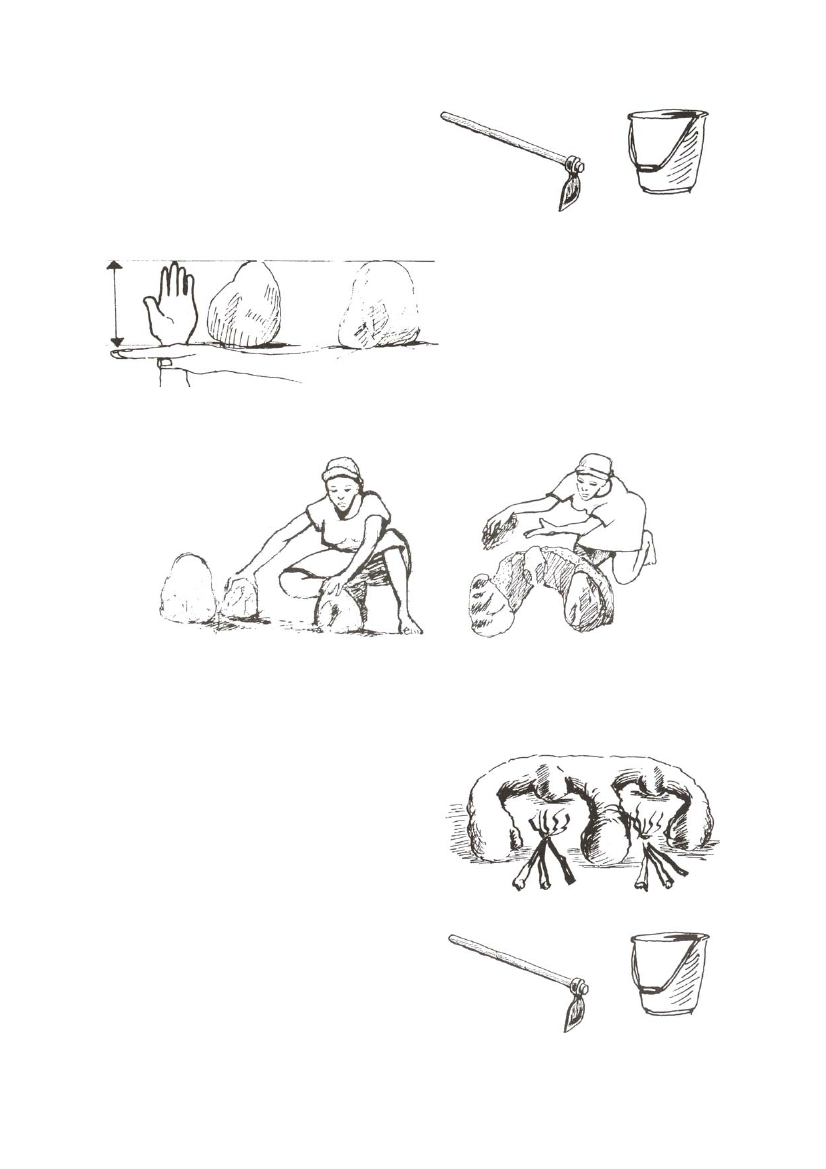
Three stones, sand, clay, water, ant hill soil where
there is no clay or any soil material where cay or
sand is not available.
Mixing ratios
There is no standard ratio.
Tools commonly used
Hoe and bucket
Dimensions
Figure 5.79 Height of the fire chamber
How to make the Rusinga stove
Figure 5.78 A hoe and bucket
The height of the fire chamber is equal to
the length between the base of the palm
and the tip of the third finger. The firewood
feeding space should be the same as the
height of the fire chamber. The thickness
of the wall should be the same size as a
fist.
Figure 5.80 Arranging the three stones
Figure 5.81 Smearing mud around the stones
1. Mix clay and any soil material with water to make mud.
2. Place three stones in the three stone fire position.
3. Smear mud round the three stones and leave one opening.
4. Continue smearing mud until the height is appropriate.
5. Let the stove dry for two weeks before use.
Twin mud stone in one platform
The stove is the forerunner of the Wasambaa
stove. It is an adaptation of the one-pot mud stove
and is one of the most practical ways of giving the
community a choice between using two stoves or
one.
Materials used
Three stones, sand, clay, water, ant hill soil where
there is no clay, any soil material where clay or sand
is not available.
Mixing ratios
There are no standard ratios
Tools commonly used
Figure 5.82 Twin mud stove in one platform
Figure 5.83 A hoe and bucket
24